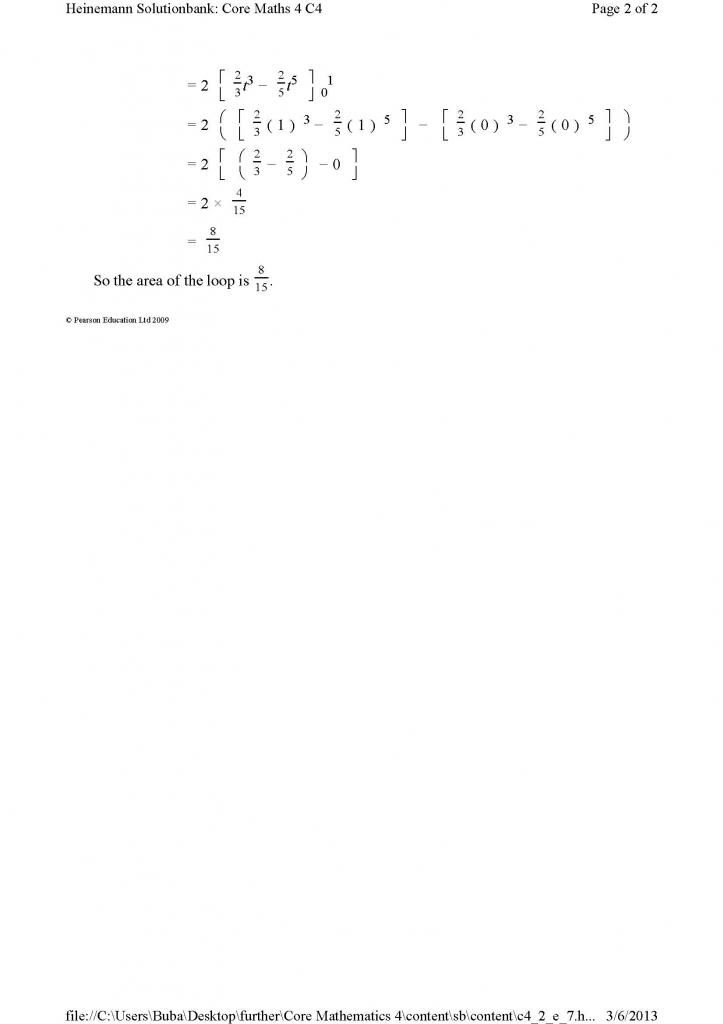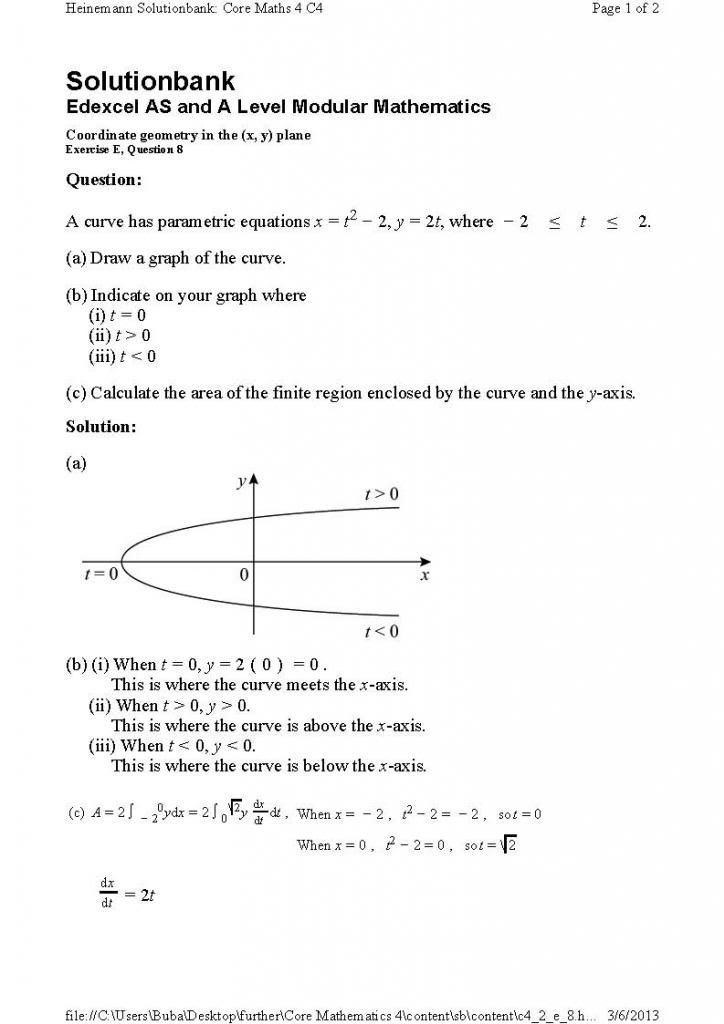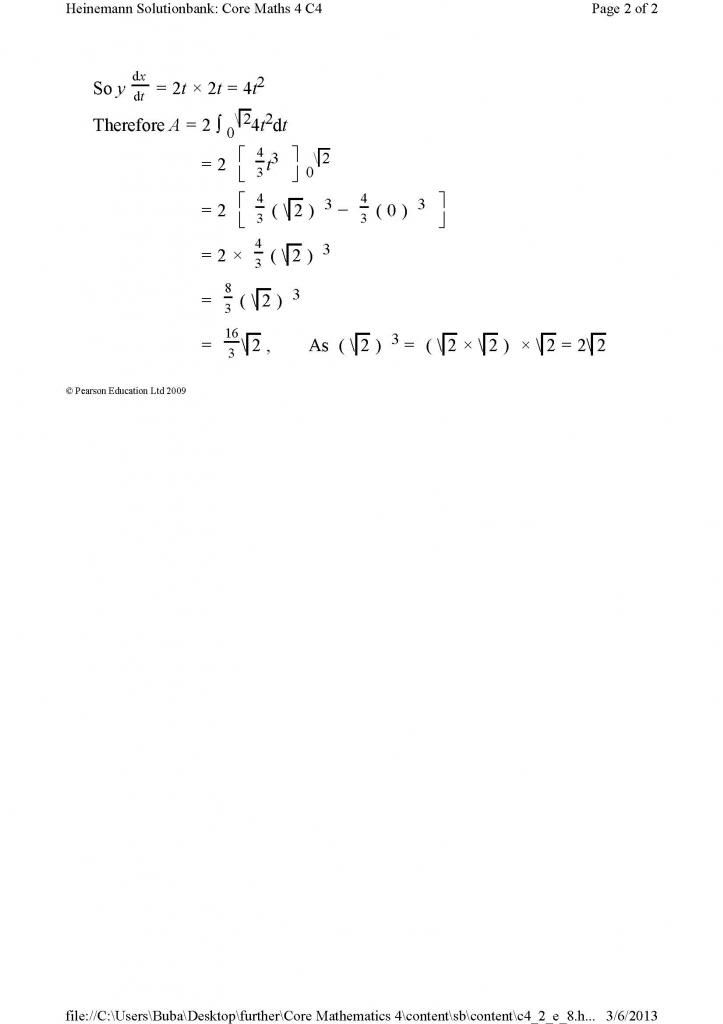c4 parametric equations help!
confused 
can anyone teach me how to find an appropriate limits?
for example, In question 7 below, the sample answer uses the t=1,0 when x=0, -1 as the limit. However, I got the same result when I uses only x=O and therefore t=1 and -1 as the limit of integral. is it just a coincidence or it is an alternative way to answer the question? If it is another method to answer the question, why? can you explain to me ? thank you very much!
Lamalam





can anyone teach me how to find an appropriate limits?
for example, In question 7 below, the sample answer uses the t=1,0 when x=0, -1 as the limit. However, I got the same result when I uses only x=O and therefore t=1 and -1 as the limit of integral. is it just a coincidence or it is an alternative way to answer the question? If it is another method to answer the question, why? can you explain to me ? thank you very much!
Lamalam




Original post by the bear
if you put -1 for t in the integral you do not get 0 in the second bracket ?
When I sub x= -1 , the value of t is zero only , I cant proceed :-/
Posted from TSR Mobile
Original post by davros
You can't "use only x=0" - that doesn't make sense! Any integral where the 2 limits are the same would come out as 0 by definition.
Is there another way to solve this problem ?? :-/
Posted from TSR Mobile
Original post by Lamalam
I am not really sure what your thinking is
You do, I assume, understand that if you try to do this as a single integral then it is bound to come out as zero because the section below the axis will cancel out the section above the axis
So you need to think about the curve between x=-1 and x=0, find either the positive section OR the negative section, and then double that
Clearly when x=-1, t=0 so that gives one of your limits
When x=0, t= 1 or -1 ... you need to realise that integrating between t=-1 and t=0 will give you one half of the space and that integrating between t=0 and t=-1 will give you the other half
So, you choose one of these pairs, integrate and double
You could do both of them - you will see that one is 4/15 (above the axis) and the other is -4/15 (below the axis)
Giving a total of 8/15 either way
Original post by Lamalam
Yes, you need to integrate from the left-most intersection with the x-axis to the point (0,0) to get the area of the top loop and then use symmetry to get the area of the bottom of the loop.
You can't integrate from a point back to the same point - you'll always get 0 (well, at least in A level maths
 )
)Quick Reply
Related discussions
- A-level Maths Question
- Parametric integration
- Edexcel A2 Mathematics: Core Mathematics C4 6666 01 - 22 June 2018 [Exam Discussion]
- Parabola coordinates (FP1) maths help
- Parametrics
- A-level maths help!
- Parametric integration
- "My Cambridge Application" Help
- modelling with parametric equations
- Implicit and parametric curves
- Anyone else feel like if they did their A levels now they would fail?
- Cartesian Equations-finding arc length
- The Directrix of a Parabola
- Maths parametric integration
- What do you need to and not need to memorise for Research Methods in psych?
- One cubic root is reciprocal of other question
- A Level Maths AQA 2023
- Hardest part of A level maths
- Help, parametric equations
- A Level Maths - Parametrics help!
Latest
Trending
Last reply 1 day ago
Did Cambridge maths students find maths and further maths a level very easy?Last reply 2 weeks ago
Edexcel A Level Mathematics Paper 2 unofficial mark scheme correct me if wrongMaths
71
Trending
Last reply 1 day ago
Did Cambridge maths students find maths and further maths a level very easy?Last reply 2 weeks ago
Edexcel A Level Mathematics Paper 2 unofficial mark scheme correct me if wrongMaths
71




